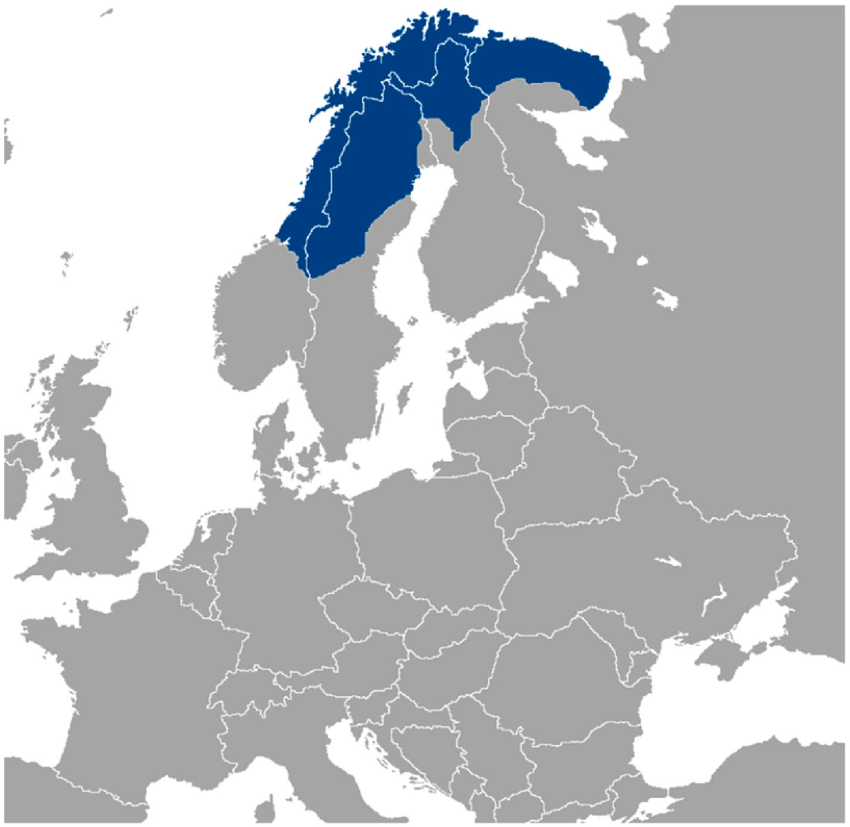ASI / IPAF work with Protect Sápmi Foundation, Norway: Supporting broad dissemination of Indigenous-led participatory and cumulative impact assessment (IPCIA)
The “Indigenous-led Participatory and Cumulative Impact Assessment Guidance Document” enables global application of IPCIA by Indigenous Peoples in their own contexts.
4 August 2023
The Protect Sápmi Foundation (“Protect”), driven by Sami interests and overseen by Norwegian Sami board members, seeks to preserve and advance Sami cultural landscapes and enterprises while protecting the rights, land, resources, and developmental opportunities of Sami rightsholders. With a core focus on assisting authorities and new business entities operating within Sami territories, the foundation actively engages in negotiations on behalf of Sami interests, including the traditional reindeer herding industry.

The Sami, the solitary Indigenous Peoples of northern Europe, inhabit Russia, Finland, Norway, and Sweden within the extensive expanse of Sápmi.
This file is licensed under the Creative Commons Attribution-Share Alike 3.0 Unported license. CC BY-SA 3.0 https://commons.wikimedia
.org/w/index.php?curid=53461
For over a century, the indigenous Sami people in Kiruna, Sweden, have grappled with the ramifications of an extensive mining operation, severely impacting their traditional reindeer husbandry industry. Negotiations with a prominent mining company in 2012 culminated in a cooperation agreement involving cumulative impact assessments (CIA) to comprehensively evaluate the potential effects on affected Sami villages, specifically Laevas and Gabna. This pioneering approach aimed to systematically assess various impacts, leading to the creation of a practical manual detailing the process of conducting cumulative impact assessments collaboratively between the mining industry and affected Sami communities.
In the meantime, Protect has amassed more than 10 years of experience with indigenous-led participatory and cumulative impact assessment (IPCIA) on indigenous cultural landscapes and traditional ecosystem services.
 A more recent IPCIA study undertaken during 2022 on the Øyfjellet wind power farm’s influence on the traditional reindeer husbandry industry in the Jillen-Njarke district, marked a milestone. The wind energy park’s establishment involved an electricity supply agreement with an ASI-Certified aluminium smelter, which . This study set a precedent as Indigenous Peoples actively participated in the assessment process, which was carried out by an indigenous organisation.
A more recent IPCIA study undertaken during 2022 on the Øyfjellet wind power farm’s influence on the traditional reindeer husbandry industry in the Jillen-Njarke district, marked a milestone. The wind energy park’s establishment involved an electricity supply agreement with an ASI-Certified aluminium smelter, which . This study set a precedent as Indigenous Peoples actively participated in the assessment process, which was carried out by an indigenous organisation.
Recognising the significance of this endeavour, ASI and the Indigenous Peoples Advisory Forum (IPAF) saw an opportunity to widely disseminate the knowledge to other global indigenous communities, and entered into a project with Protect that would see the cumulative impact assessment manual updated and translated into English. This initiative aimed to make the manual a valuable international resource, reflecting current knowledge and practices.
With ASI and IPAF support and participation, Protect successfully refined and published the Indigenous-led Participatory and Cumulative Impact Assessment Guidance Document, enabling its global application for Indigenous Peoples in their own contexts.
More information
RELATED TOPICS:
SHARE THIS ARTICLE


